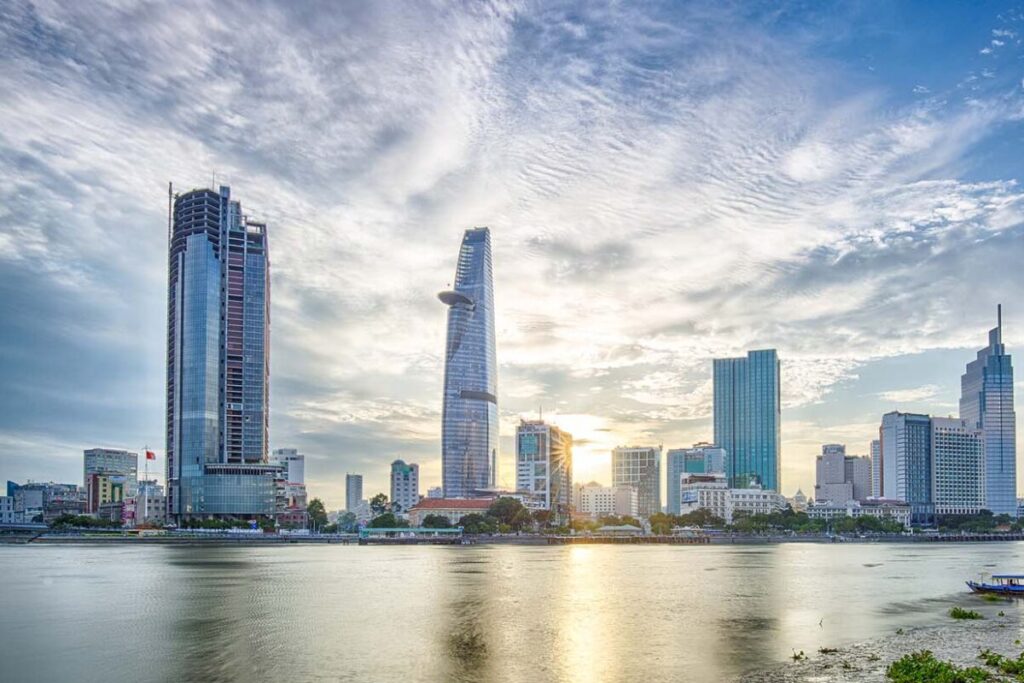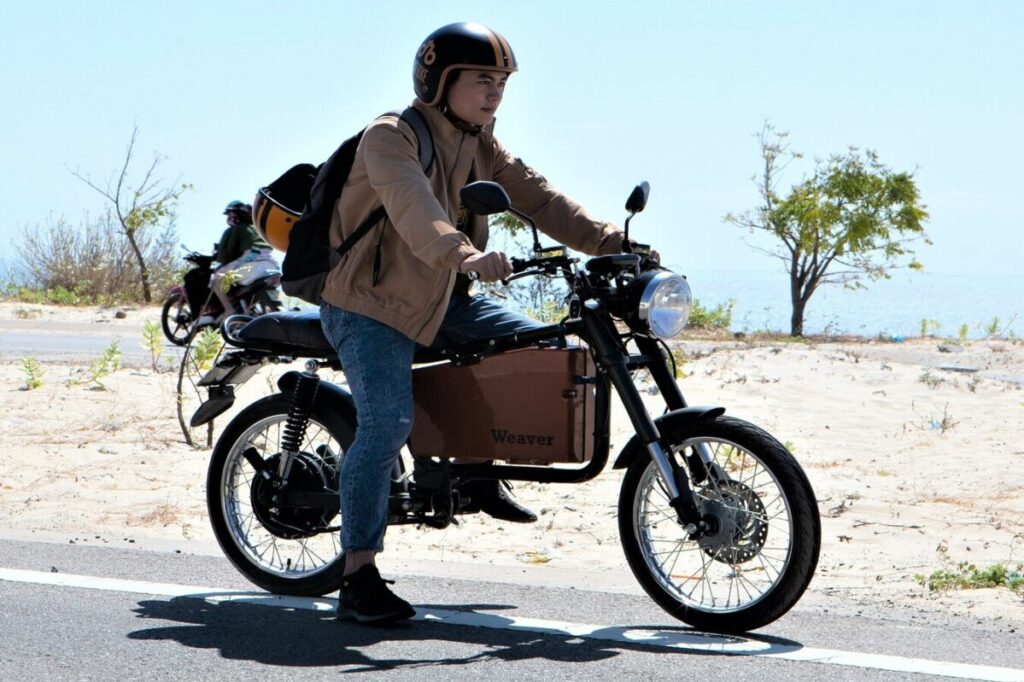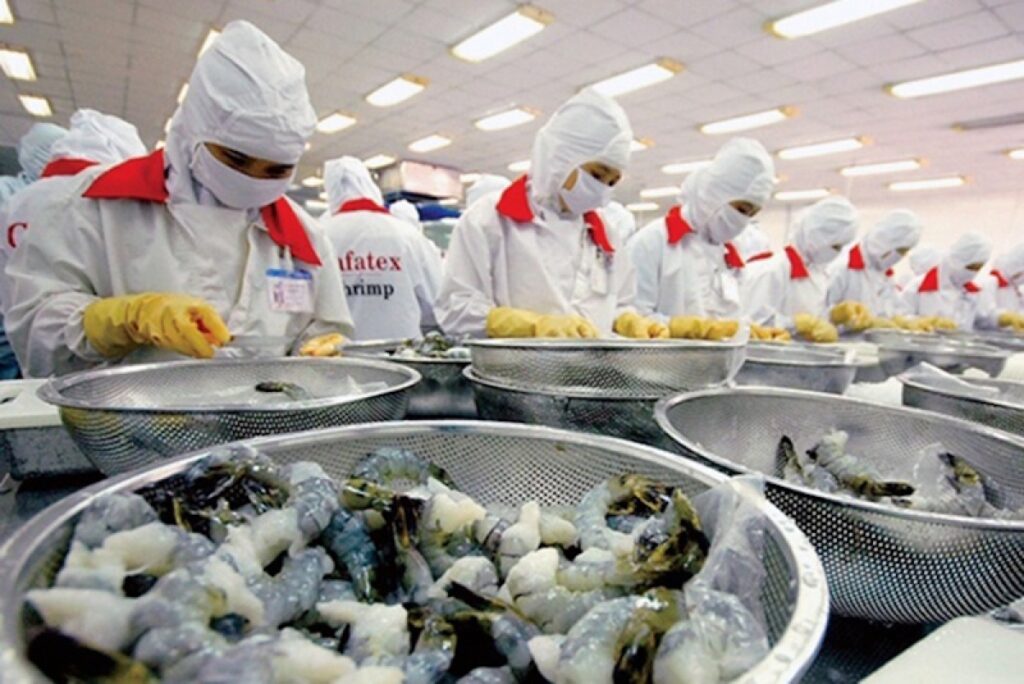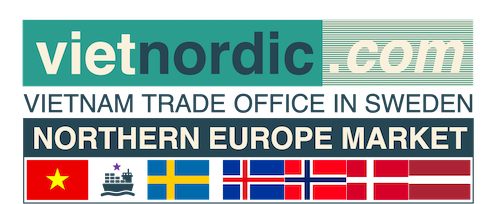BUY VIETNAM THIS MONTH
Agriconst, food
B+, furniture
Hagimex, vegetables
IDD, coffee
Khoi Nguyen, rice
Kim Pai, tubes
Orion, food
Gia Nguyen, ceramics
Sao Viet, plastic
T&M, logistics
VCI, law
HEADLINES
Ho Chi Minh City aims to become leading investment destination in region
Ho Chi Minh City is applying measures to become a leading destination in the region in investment, renovation, and science-technology in 2025, creating a fair and safe business environment for businesses and investors.

Under a new plan issued recently by the municipal People’s Committee for the 2021-2025 period, HCM City will continue to improve the Provincial Competitiveness Index (PCI) while seeking measures to improve the investment and business environment towards easier, more transparent and fair orientations.
The city expects to become one of the five leading localities in PCI by 2025.
Meanwhile, HCM City aims to enter the list of top localities nationwide in socio-economic management quality, with rapid digital transformation.
To this end, the municipal People’s Committee has introduced a number of measures, including strengthening the leadership and direction of improvements to the city’s competitiveness as well as the local business and investment environment, and building plans to speed up administrative reform.
To increase the PCI component indexes, the city targets that at least 93 percent of business registration requests and 40 percent of investment licence issuance will be processed online.
It will also enhance the operational efficiency of the centre for land reserve development to prepare land for investors.
Along with making public all processes regarding administrative procedures to make it easier for people and businesses to follow, the city will also work to reduce the time needed for processing and improve public service quality.
The municipal People’s Committee has assigned the Department of Planning and Investment to cooperate with the Viet Nam Chamber of Commerce and Industry (VCCI) to design and implement a set of criteria to assess the capacity of departments, sectors, and localities around the city in applying measures to improve the business and investment environment and the PCI in the 2021-2025 period.
FROM THE BEGINNING OF THIS YEAR
Sweden exports to Vietnam
| Products | 3M/2020 | 3M/2021 | Change (%) |
|---|---|---|---|
| All products (USD) | 292,503,294 | 270,550,474 | -7.51% |
| Telephone sets, parts thereof | 175,807,777 | 130,572,317 | -2.73% |
| Footwears, parts of such articles | 13,630,139 | 17,822,638 | 30.76% |
| Textiles and garments | 13,284,830 | 17,342,461 | 30.54% |
| Machinery, mechanical appliances, equipment, parts thereof | 9,707,718 | 15,284,309 | 57.44% |
| Articles of iron or steel | 2,568,050 | 11,949,637 | 365.32% |
| Computers, electrical products, part thereof | 12,968,480 | 10,636,085 | -17.99% |
| Wood and articles of wood | 11,321,279 | 9,900,076 | -12.55% |
| Bags, purses, suitcases, hats, umbrellas | 6,070,011 | 7,733,650 | 27.41% |
| Fish and crustaceans, molluscs and other aquatic invertebrates | 2,783,128 | 4,373,447 | 57.14% |
| Plastic products | 4,475,646 | 3,739,407 | -16.45% |
| Products of rattan, bamboo, sedge and carpet | 2,264,611 | 3,450,913 | 52.38% |
| Toys, sports equipment and parts | 3,145,877 | 2,727,962 | -13.28% |
| Materials for textiles and garments, and footwares | 1,599,844 | 2,444,114 | 52.77% |
| Ceramic products | 1,016,687 | 944,922 | -7.06% |
| Other metals and products | 258,857 | 520,409 | 101.04% |
| Rubber | 306,432 | 259,384 | -15.35% |
| Other goods | 31,293,928 | 30,848,743 | -1.42% |
Sweden imports from Vietnam
| Products | 3M/2020 | 3M/2021 | Change (%) |
|---|---|---|---|
| All products (USD) | 292,503,294 | 270,550,474 | -7.51% |
| Telephone sets, parts thereof | 175,807,777 | 130,572,317 | -2.73% |
| Footwears, parts of such articles | 13,630,139 | 17,822,638 | 30.76% |
| Textiles and garments | 13,284,830 | 17,342,461 | 30.54% |
| Machinery, mechanical appliances, equipment, parts thereof | 9,707,718 | 15,284,309 | 57.44% |
| Articles of iron or steel | 2,568,050 | 11,949,637 | 365.32% |
| Computers, electrical products, part thereof | 12,968,480 | 10,636,085 | -17.99% |
| Wood and articles of wood | 11,321,279 | 9,900,076 | -12.55% |
| Bags, purses, suitcases, hats, umbrellas | 6,070,011 | 7,733,650 | 27.41% |
| Fish and crustaceans, molluscs and other aquatic invertebrates | 2,783,128 | 4,373,447 | 57.14% |
| Plastic products | 4,475,646 | 3,739,407 | -16.45% |
| Products of rattan, bamboo, sedge and carpet | 2,264,611 | 3,450,913 | 52.38% |
| Toys, sports equipment and parts | 3,145,877 | 2,727,962 | -13.28% |
| Materials for textiles and garments, and footwares | 1,599,844 | 2,444,114 | 52.77% |
| Ceramic products | 1,016,687 | 944,922 | -7.06% |
| Other metals and products | 258,857 | 520,409 | 101.04% |
| Rubber | 306,432 | 259,384 | -15.35% |
| Other goods | 31,293,928 | 30,848,743 | -1.42% |
Norway exports to Vietnam
| Products | 3M/2020 | 3M/2021 | Change (%) |
|---|---|---|---|
| All products (USD) | 72,277,103 | 82,246,503 | 13.79% |
| Fish and crustaceans, molluscs and other aquatic invertebrates | 44,378,028 | 56,812,056 | 28.02% |
| Other machinery, equipment, tools and spare parts | 11,173,445 | 10,195,826 | -8.75% |
| Fertilizers | 2,659,226 | 1,889,151 | -28.96% |
| Chemical products | 761,190 | 1,089,901 | 43.18% |
| Articles of iron or steel | 1,986,643 | 724,070 | -63.55% |
| Other goods | 11,318,571 | 11,535,499 | 1.92% |
Norway imports from Vietnam
| Products | 3M/2020 | 3M/2021 | Change (%) |
|---|---|---|---|
| All products (USD) | 39,038,813 | 32,054,825 | -17.89% |
| Footwears, parts of such articles | 5,122,590 | 5,833,794 | 13.88% |
| Textiles and garments | 4,029,640 | 4,333,080 | 7.53% |
| Fish and crustaceans, molluscs and other aquatic invertebrates | 2,019,780 | 2,732,001 | 35.26% |
| Cashew nuts | 1,785,258 | 1,617,714 | -9.38% |
| Other machinery, equipment, tools and spare parts | 595,109 | 1,598,236 | 168.56% |
| Furniture products from materials other than wood | 3,360,800 | 1,502,830 | -55.28% |
| Plastic products | 996,159 | 1,067,093 | 7.12% |
| Articles of iron or steel | 10,493,683 | 774,765 | -92.62% |
| Bags, purses, suitcases, hats, umbrellas | 1,238,804 | 736,419 | -40.55% |
| Fruits and vegetables | 718,109 | 713,623 | -0.62% |
| Wood and articles of wood | 546,578 | 689,259 | 26.10% |
| Transport vehicles and spare parts | 197,833 | 544,645 | 175.31% |
| Cameras, camcorders and components | 545,940 | 405,998 | -25.63% |
| Other goods | 7,388,530 | 9,505,368 | 28.65% |
Denmark exports to Vietnam
| Products | 3M/2020 | 3M/2021 | Change (%) |
|---|---|---|---|
| All products (USD) | 47,340,537 | 54,980,587 | 16.14% |
| Other machinery, equipment, tools and spare parts | 13,919,392 | 11,998,831 | -13.80% |
| Pharmaceutical products | 5,856,692 | 8,346,032 | 42.50% |
| Chemical products | 6,506,616 | 7,213,623 | 10.87% |
| Fish and crustaceans, molluscs and other aquatic invertebrates | 6,466,035 | 6,139,830 | -5.04% |
| Articles of iron or steel | 1,092,774 | 2,418,458 | 121.31% |
| Plastic products | 1,483,929 | 1,744,237 | 17.54% |
| Computers, electrical products, part thereof | 1,380,419 | 1,529,868 | 10.83% |
| Electric wires and cables | 687,784 | 711,512 | 3.45% |
| Milk and dairy products | 418,541 | 309,952 | -25.94% |
| Materials for textiles and garments, and footwares | 167,501 | 43,885 | -73.80% |
| Other goods | 9,360,854 | 14,524,359 | 55.16% |
Denmark imports from Vietnam
| Products | 3M/2020 | 3M/2021 | Change (%) |
|---|---|---|---|
| All products (USD) | 74,268,777 | 84,171,638 | 13.33% |
| Wood and articles of wood | 8,727,080 | 12,064,634 | 38.24% |
| Fish and crustaceans, molluscs and other aquatic invertebrates | 9,087,675 | 10,488,914 | 15.42% |
| Furniture products from materials other than wood | 9,479,692 | 9,287,373 | -2.03% |
| Textiles and garments | 13,546,491 | 8,781,188 | -35.18% |
| Other machinery, equipment, tools and spare parts | 4,402,362 | 6,142,520 | 39.53% |
| Plastic products | 4,105,560 | 6,086,454 | 48.25% |
| Articles of iron or steel | 2,980,007 | 4,306,761 | 44.52% |
| Ceramic products | 2,198,493 | 3,188,780 | 45.04% |
| Footwears, parts of such articles | 3,656,322 | 3,024,369 | -17.28% |
| Products of rattan, bamboo, sedge and carpet | 1,705,257 | 2,573,367 | 50.91% |
| Electric wires and cables | 855,832 | 2,323,781 | 171.52% |
| Toys, sports equipment and parts | 1,346,991 | 1,631,532 | 21.12% |
| Bags, purses, suitcases, hats, umbrellas | 1,682,979 | 1,573,923 | -6.48% |
| Transport vehicles and spare parts | 1,189,967 | 1,240,151 | 4.22% |
| Coffee | 382,162 | 343,356 | -10.15% |
| Other goods | 8,921,907 | 11,114,535 | 24.58% |
EVFTA
Nearly 5 billion USD of exports to EU benefit from EVFTA
Almost 5 billion USD worth of Vietnamese goods exported to the EU has benefited from preferential tariffs under the EU-Viet Nam Free Trade Agreement (EVFTA), according to the Ministry of Industry and Trade (MoIT).
The MoIT said efforts to capitalise on FTAs have resulted in significant outcomes, helping to achieve fast and sustainable export and gradually reduce the dependence on single or certain markets.
Certificates of origin have been used to help about 32 – 34 percent of annual export revenue benefit from preferential treatment under FTAs, showing that Vietnamese businesses and goods are increasingly tapping into concessionary tariffs in the markets having FTAs with the country, it added.
The MoIT noted from August 1, 2020, when the EVFTA took effect, to April 4 this year, authorised agencies and organisations in Viet Nam granted about 127,300 sets of the certificate of origin form EUR 1 for nearly 4.8 billion USD of exports to the 27 EU countries.
Besides, enterprises shipping goods to the EU also conducted self-certification of origin for more than 10.88 million USD worth of commodities to utilise preferential tariffs.
The beneficiary items were mainly footwear, aquatic products, textile-garment, farm produce, and electronic products, the MoIT said.
OTHER NEWS
Vietnamese electric motorbike start-up gets foreign funding
Dat Bike, a Vietnamese technology start-up that plans to make electric motorbikes, has raised 2.6 million USD in a pre-series A funding from Singapore’s Jungle Ventures, Wavemaker Partners, Hustle Fund, and iSeed Ventures.

Electric motorbikes are usually weak and have a low range, delivering only half the performance of a petrol bike.
But Dat Bike claims its Weaver can rival petrol bikes in power and range, its 5,000W motor helps accelerate from 0 to 50km/h in just three seconds, its charging time is the fastest in the country at just under three hours, and its brake mechanism is tailored to the traffic situation in Viet Nam.
Song Nguyen, founder and CEO of Dat Bike, said: “We want to transform the 250 million gasoline bikes in Southeast Asia into electric vehicles. We believe that if given a choice everyone would pick electric over gas. It is just that the current electric motorbikes in the market lag behind in power and range, making it difficult for people to make the switch.
“The fresh funds will allow us to continue to innovate and create the most compelling electric motorbikes for Southeast Asia and the world.”
Amit Anand, founding partner of Jungle Ventures, said: “This investment in Dat Bike marks our first investment in the mobility sector which is rapidly getting transformed by technology. The 25 billion USD two-wheeler industry in Southeast Asia in particular is ripe for reaping benefits of new developments in electric vehicles and automation.
“We believe that Dat Bike will lead this charge and create a new benchmark not just in the region but potentially globally for what the next generation of two-wheeler electric vehicles will look and perform like.”
The Weaver can be bought on the company’s website and physical store in Ho Chi Minh City. It costs 39.9 million USD.
High-tech shrimp farming brings high profits in Bac Lieu province
The Mekong Delta province of Bac Lieu plans to expand super – intensive shrimp farming as it is sustainable and offers high production value.

With the current supply chain disruptions
The province, which is one of the country’s leading areas where shrimp is bred with advanced techniques, had more than 25,800ha of super-intensive and intensive shrimp farming areas last year.
Super- intensive shrimp farming offers a high yield of 40 – 50 tonnes per hectare per crop and a profit of 1 billion VND (43,200 USD) per hectare for three shrimp crops a year. It has a success rate of 80 – 90 percent.
It uses shrimp breeding ponds with oxygenation facilities, anti-sunlight nets and plastic sheets on the bed.
The province has established a 418ha hi-tech agriculture zone for shrimp development in Bac Lieu city’s Hiep Thanh commune.
About 90 percent of the construction of the hi-tech agriculture zone has been completed, and more than 30 companies have registered to invest in the zone.
In the zone, four companies and 76 households breed white-legged shrimp under the super-intensive farming model on more than 160 ha.
The zone will also produce shrimp fry and shrimp food to serve demand. Shrimp fry producers now produce 32 – 35 billion fry of white- legged shrimp and black tiger shrimp a year.
Last year, aquaculture production faced challenges because of drought, saltwater intrusion and the COVID-19 pandemic, but its output and yield rose after the province took preventive measures and set up proper breeding schedules.
The province’s aquaculture output and seafood catch reached 400,000 tonnes last year, including 200,000 tonnes of shrimp.
Last year, the province’s fishery sector accounted for 58 percent of its agriculture production value.
Luu Hoang Ly, director of the local Department of Agriculture and Rural Development, said: “To achieve better results in aquaculture production this year, the province has invested more in infrastructure for shrimp cultivation, properly regulating water resources for shrimp cultivation and strictly managing input materials and shrimp fry for shrimp cultivation.”
Because saltwater intrusion in the ongoing dry season could occur in canals and ponds, shrimp breeders using super-intensive and intensive farming models should store fresh water in ponds and mix the fresh water with saline water in canals used for breeding shrimp, he said.
Shrimp breeders should not release shrimp for breeding this month because of prolonged hot weather. Off-season rains could also cause sudden changes in the breeding environment, he added.
To destroy disease pathogens and improve production efficiency, breeders should schedule a break between two shrimp crops, he said.
Besides super – intensive and intensive shrimp farming models, the province has developed other environmentally friendly models like rice – shrimp and shrimp – forest farming to produce clean shrimp for export and local consumption.
The province exported more than $800 million of seafood last year. It targets harvesting 414,400 tonnes of aquatic products from aquaculture and catches this year, up 3.6 percent against last year, according to the department.
With a coastline of more than 56km, Bac Lieu has high potential for shrimp cultivation, especially brackish water shrimp. The province has more than 136,000ha of shrimp cultivation area.
Viet Nam’s fisheries development strategy to 2030
Under Viet Nam’s fisheries development strategy to 2030 and vision to 2045, the fisheries sector is applying itself to become an important sector in the country, strongly integrate into the world, develop sustainably and responsibly, and proactively adapt to climate change.

Deputy Minister of Agriculture and Rural Development Phung Duc Tien said that after continually posting rapid growth, the fisheries sector now has considerable production scale and value along with many products earning annual export turnover in excess of 1 billion USD.
Its product structure has changed strongly towards higher proportions of aquaculture and products with high added value, he noted, adding that aquatic products have been exported to about 160 countries and territories, in particular the EU, Japan, the US, the Republic of Korea, and Russia.
The presence of Vietnamese fishing boats and fishermen on the country’s seas has also greatly helped safeguard maritime sovereignty and security. The fisheries sector now provides jobs for about 3.9 million people, thus contributing to agricultural restructuring, according to Tien.
However, he acknowledged, there remain many problems facing the sector, which has yet to fully tap into its potential and advantages.
It is looking to earn 14-16 billion USD from exports and establish itself as a key national sector with sustainable development and proactive adaptation to climate change by 2030. Viet Nam also targets becoming one of the three leading fisheries producers and exporters in the world by 2045.
Tran Dinh Luan, General Director of the Directorate of Fisheries, recommended localities re-organise production, exercise sound control over inputs, issue timely warnings on disease in farmed species, and boost technology transfer, which are both short and long-term tasks.
He also called on relevant agencies to immediately pay due regard to the fight against illegal, unreported, and unregulated (IUU) fishing, noting that the Ministry of Agriculture and Rural Development has requested relevant sectors and localities soon complete steering boards on anti-IUU fishing and send members to the national steering committee so as to take uniform action to carry out recommendations from the European Commission, which has issued a “yellow card” warning on the issue to Viet Nam.
Former Minister of Agriculture and Rural Development Nguyen Xuan Cuong said that to achieve set targets, the fisheries sector should take concerted solutions such as reducing the number of inshore fishing vessels, increasing offshore fishing fleets, gradually downsizing exploitation, boosting aquaculture, and stepping up the conservation, recovery, and development of fisheries resources.
